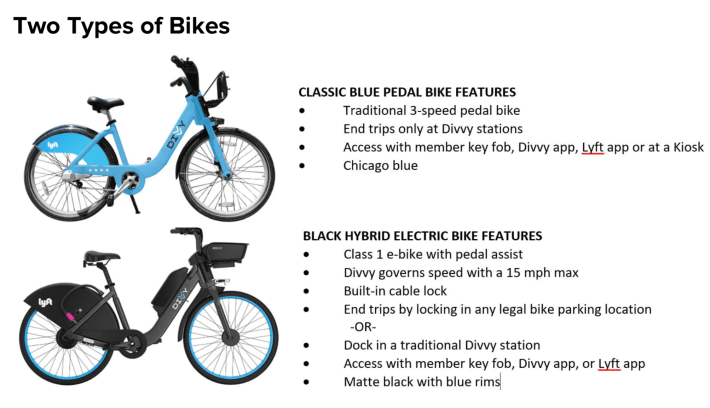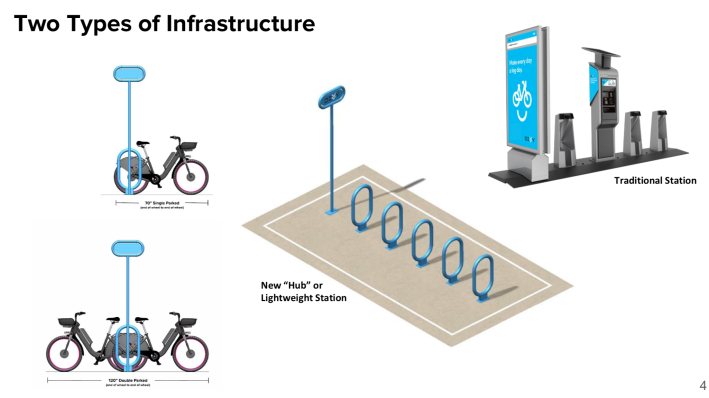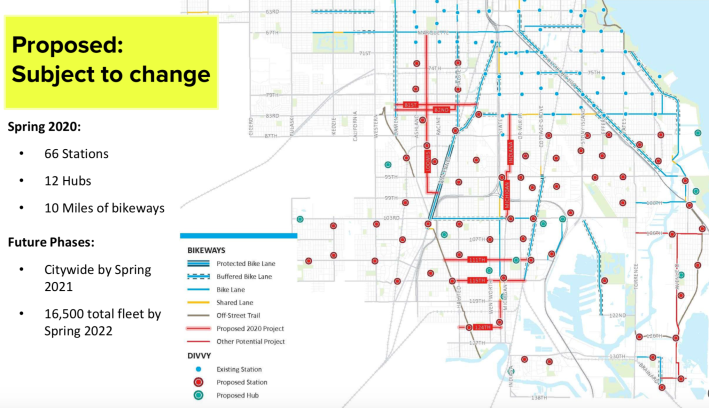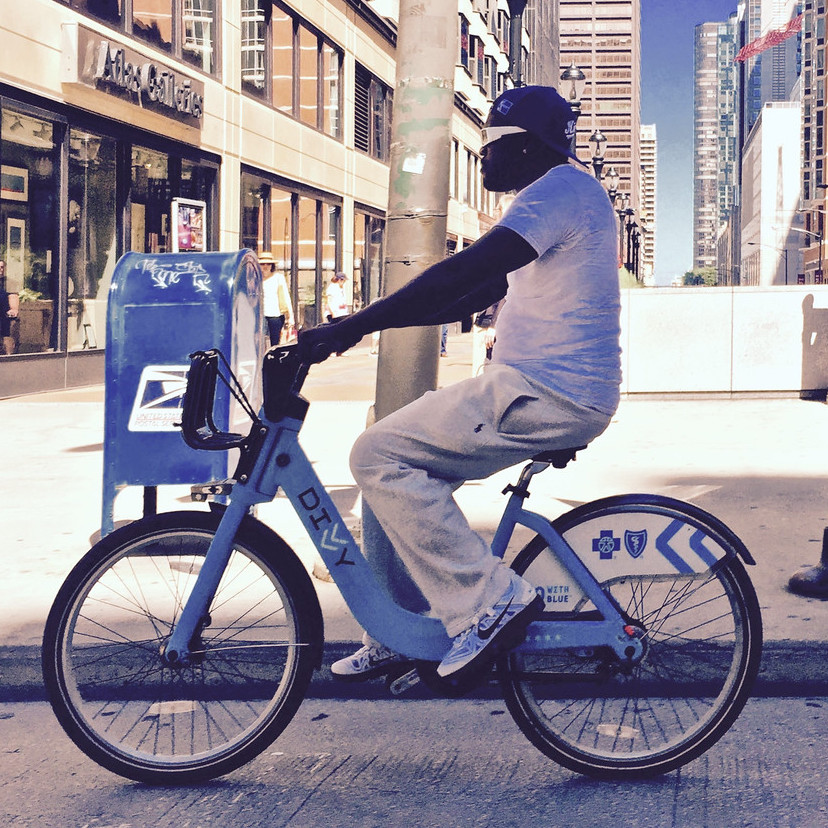At Wednesday's quarterly Mayor's Bicycle Advisory Council meeting, reps from the Chicago Department of Transportation and Divvy provided an update on the planned expansion of the bike-share system to the Far South Side this spring. While the expansion was supposed to happen last fall, they assured attendees that all systems are go for the spring launch.
Nina Idemudia from Muse Community + Design, a consultant on the expansion, discussed the outreach approach for selecting Far South station locations. "We like to meet people where they are," she said. "We want to make sure our outreach efforts are flexible, approachable, and tailored to the community, regardless of their knowledge of Divvy or their interest in bike riding, because we want to engage everyone... so that we can really get the feedback that will help expand the program in the right ways."
Divvy reps appeared at many community events on the Far South Side last year to collect suggestions for station locations. They also held more intimate roundtable with maps where residents could indicate which corners should get docks. The suggestions were evaluated for feasibility -- community members might have provided input on whether a corner was too dark for comfortable nighttime use, or had other personal security or traffic safety issues. The draft locations were vetted again with stakeholders, and then locations were prioritized according to how the stations would fit into the wider Divvy network.

Amanda Woodall, CDOT's Divvy program director, provided info on the nuts and bolts of how the rollout will work. She noted that unlike the existing baby-blue, non-electric cycles, the new black electrical-assist bikes will have built in cable locks, so they don't need to be docked at stations, but can also be secured to bike racks, sign poles, or any other legal bike parking space. The electrical assist will top out at 15 mph. One new feature for both kinds of bikes will be a QR code on the bikes that will allow you to check them out by scanning the code with a smartphone.
In addition to the traditional stations, "hubs" with ring-shaped bike racks will be installed as a place to park the e-bikes plus a sign on a pole indicating that the racks are for the lock-to e-Divvies. Woodall said that, while CDOT will be getting the word out that the hubs are intended for Divvies, it's likely people will park private bikes there now and then as well. "That's not our preference... but we recognize that there's going to be a need for bike parking no matter what." She added that the department also added scores of normal bike racks on the Far South Side during a recent batch of installations.

Woodall noted that with the new bikes that can be locked anywhere, not just at stations, the system will become more flexible, and it will be easier to end your bike trip close to your destination. "It means we need fewer stations in order to have a functioning, robust network. So when we show you the dots on the map for where the stations are going to go, and you see fewer of them [than in the existing service area], it's important to keep in mind that it's not just an expansion of the system, but it's an upgrade of the technology."
Next Woodall showed the proposed locations of 66 docking stations and 12 parking hubs, pending approval from local aldermen. As it stands, Divvy stations in the many of densest parts of town, including downtown and many North Side neighborhoods, are typically 1/4 mile (two full blocks) from each other. In other parts of the city that currently have Divvy, stations are usually about a half mile from each other. But on the Far South Side, the planned spacing is as a mile.
Woodall noted that the green dots are further out from the existing network, because the city wants to make sure that the blue bikes tend to stay in more central areas, and the hubs are in areas that customers are less likely to access with a cycle that needs to be docked.

The map also shows 10 miles of new bikeways. Bike lanes planned for construction this year include stretches on 81st Street, 82nd Street, Loomis Avenue, Michigan and Indiana avenues, 111th, 115th, and 124th streets. A few more miles are proposed for later installation in the southeast corner of the city. But the hoped-for side path on highway-like 130th Street in the Riverdale community area, the home base for the cycling group We Keep You Rollin', is not yet included on the map. The bikeways planned for this year will be funded with sponsorship money the city is receiving from Lyft, the Divvy concessionaire.
The citywide completion of the Divvy system is slated for 2021. "This is the kind of energy that goes into putting in 66 [stations]; we have another 110 to go, not including the hubs," Woodall said. Currently there are about 6,000 blue bikes, and another 10,500 e-bikes will be added to the fleet by spring 2022 for a total of 16,500. As the blue bikes wear out, they will be replaced with e-bikes, "but we have no idea when that is, because they're all running like tanks."
In late January a bike-share industry insider told me that the Divvy expansion had been delayed because paperwork for the federal grants that funded the original Divvy stations needed to be closed out before upgrades could be made to the docks to accommodate the e-bikes, and Federal Highway Administration and Illinois Department of Transportation officials were being very cautious about signing off on the paperwork. That person said there was a chance that this bureaucratic holdup might jeopardize the spring launch.
However, Woodall indicated the bureaucratic holdup is no longer an issue, and said she's confident that planned rollout will happen. "We are on target for spring."




